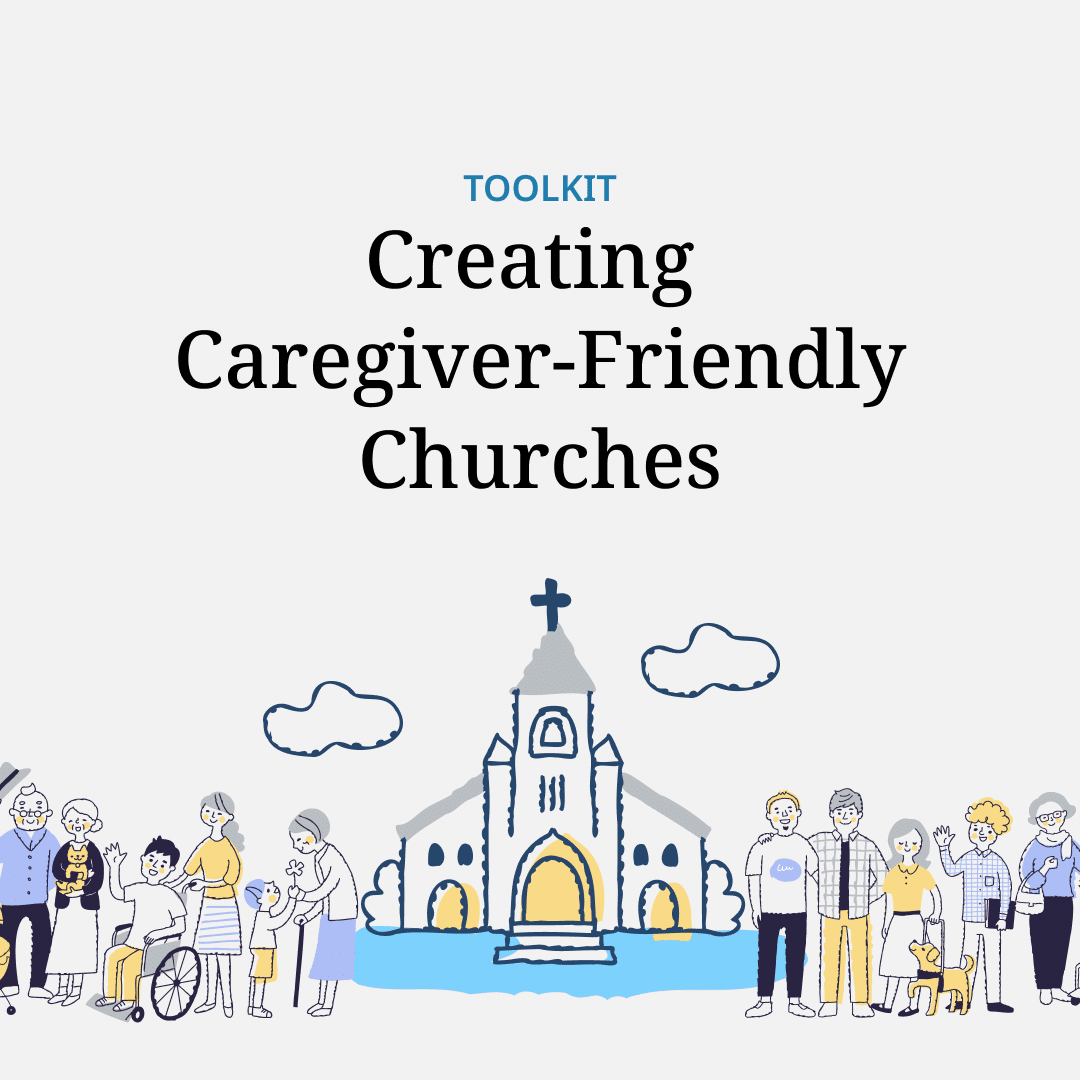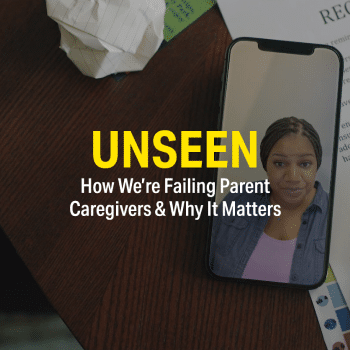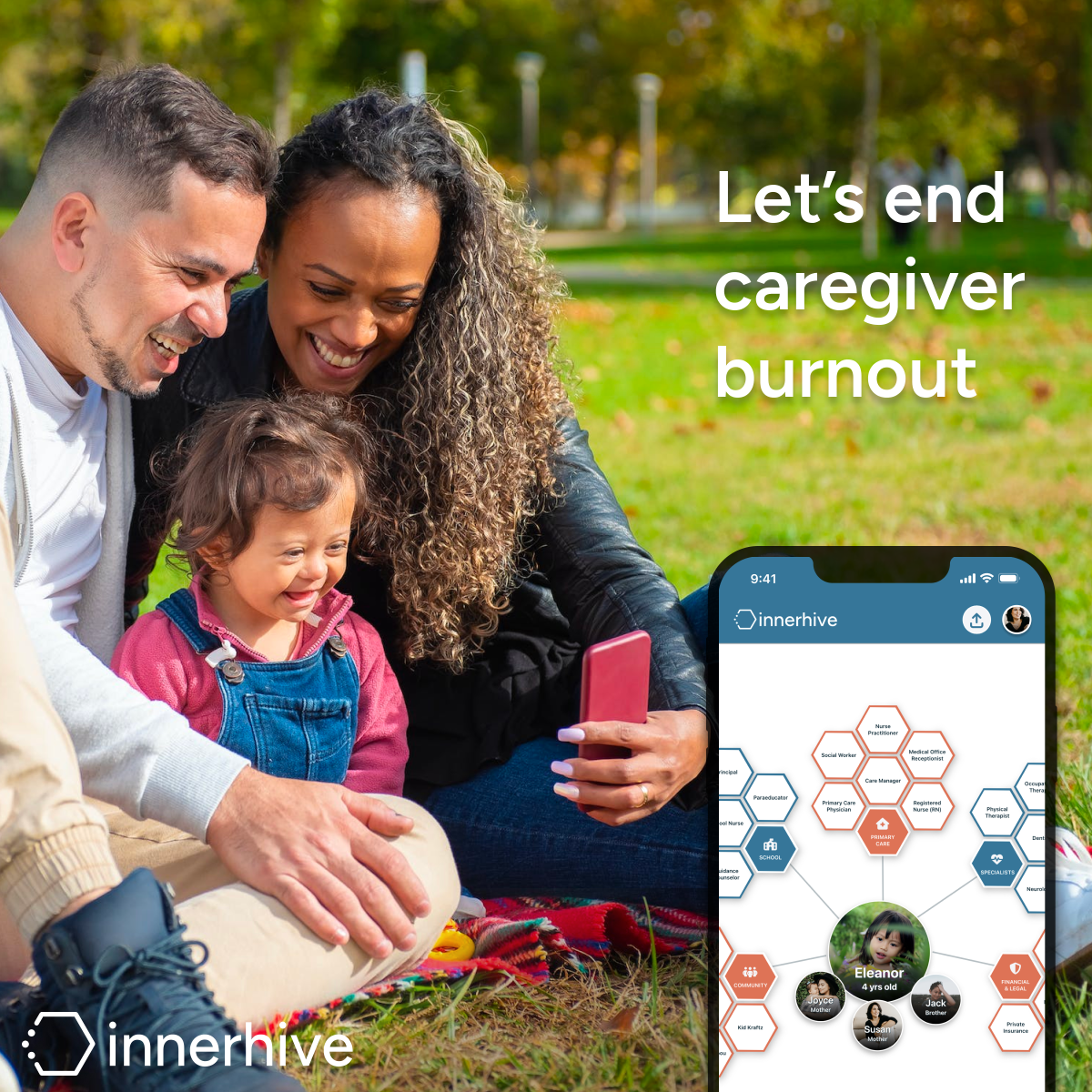
Explore the Caregiver-Friendly Churches Toolkit
Learn how faith communities can support caregivers by fostering a culture of care, accessibility, and practical assistance.
Caregiver-Friendly Churches Toolkit
Presented by

Most churches have a genuine desire and stated mission to serve their community. Caregivers — who often report feeling isolated and unseen — should be included in this community.
How do you prepare your congregation to care for caregivers? Read on to find out.
In our society, care work is often undervalued and taken for granted, despite being an essential part of maintaining healthy families and communities. Creating a culture of care within a church means recognizing the immense contributions caregivers make and ensuring they feel valued and supported. Read our tips for creating a culture of care at church to get started.
Consider forming a group of church staff and/or volunteers dedicated to helping meet the needs of caregivers and their families, just like you would for other groups, like new parents or the recently bereaved.
Your church’s Caregiver Task Force might keep an active list of caregiver members with the intent to check in regularly and find ways to meet individual needs as they come, such as offering respite or transportation help, or assistance with household tasks.
Having a dedicated task force will ensure caregivers — working quietly behind the scenes — don’t fall through the cracks, but are instead seen and valued for who they are and the important work they do.
Check out our guide with 12 Ways to Support Caregivers for ideas on practical ways to offer help.
The needs of caregivers and their families are ever-evolving. They also tend to wax and wane. Because of this inconsistency, caregivers and their families might be left off of prayer and support lists because their needs may not be acute right now. Strive to carve out a permanent space for caregivers and their families on your needs lists to ensure they receive regular check-ins. Caregivers are so busy they may not even realize they could benefit from assistance until someone offers a helping hand.
People who aren’t caregivers might not be aware of the difficulties that come with the job, so providing education to the congregation may be necessary to highlight their challenges. Keep caregivers and their families in mind when creating sermons, programs, messaging and ministries. They are an important part of the church family, too, even though their daily lives may look a little different.
Another great way to inform the public of the needs of caregivers is to host a screening of the UNSEEN documentary. This engaging form of visual media has a way of resonating with folks in a way that words simply can’t.
Sometimes what a caregiver needs isn’t physical assistance or your best advice, but rather a listening ear and a shoulder to cry on. Support comes in many forms, and listening might just be the most important of all.
Having the “right answers” isn’t necessary, but saying hurtful things can turn off a caregiver from church and cause harm. Share our “Say This, Not That” guide to aid church members in connecting with caregivers.
Here are ways you can get started:

Learn how faith communities can support caregivers by fostering a culture of care, accessibility, and practical assistance.

The “Unseen” documentary gives an unfiltered, honest glimpse into the lives of caregivers and their families.

Spreading Sunshine brings joy to families impacted by childhood illness by sending care packages to children and providing support to the entire family.

Designed for families and care teams, the Innerhive app serves as a central hub of caregiving tools, resources, and community.

Sign up to get notified about upcoming screenings, new bonus content releases, and get a 10% off coupon for our mech store!